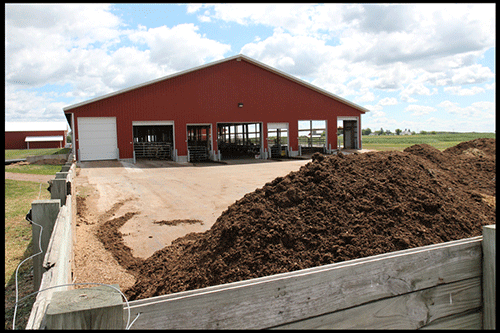
Wisconsin is rich in manure resources produced by nearly 3.5 million cattle, so the state's livestock producers need to be savvy manure managers. University of Wisconsin-Madison soil and water conservation experts have teamed with meteorologists to create a set of online, technology-based tools that can help producers determine when they should spread and when they should wait.
"We like to consider manure as a resource and not as a waste product," says John Panuska, a faculty associate of the Department of Biological Systems Engineering at the University of Wisconsin-Madison who helped develop the new Wisconsin Manure Management System. "Losing that material to a rainfall or snow melt event as a result of runoff makes it an environmental risk."
The Wisconsin Manure Management Advisory System was developed in response to some major manure runoff events in the past. A key piece of the system is a runoff risk advisory forecast, which uses information on recent rainfall and upcoming weather events to help farmers time manure application to coincide with the most suitable soil conditions.

The risk advisory forecast highlights the degree of risk across the state on a map of Wisconsin watersheds. A watershed that's at high risk for runoff on a given day is colored red. Farmers can click through the risk for next three days during the non-snow melt period and the next 10 days during snow melt conditions. A grower can use this information to plan to apply manure when the risk of runoff is lowest.
The forecasting system combines data from the National Weather Service Forecasting Center in the Twin Cities with computer models of each of Wisconsin's watersheds. The systems' creators calculated thresholds for each watershed that give "a reasonable prediction of when runoff is going to occur," says Panuska.
Of course, finding a dry time to apply manure is not always a matter of waiting a couple of days. Last spring, for example, frequent rains saturated soils as the ground was thawing. Longer term planning is important, and that's the purpose of another piece of the manure management system, the nutrient application restriction maps. These maps delineate areas with seasonal restrictions on manure application.
Panuska says that producers need to use these forecasting tools in combination with a boots-on-the-ground approach. "The final decision to spread must be based on local field conditions," he says. Combining a field-by-field assessment with the short- and long-term planning tools can help farmers decide when to apply manure by giving them a clearer picture of the likely impact of substantial rainfall or freeze.
8.27.2013